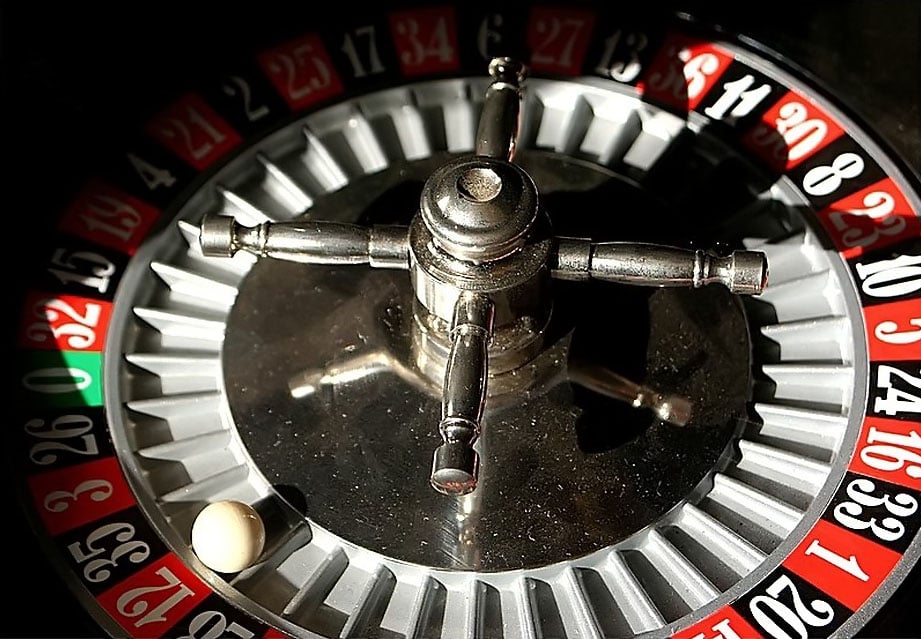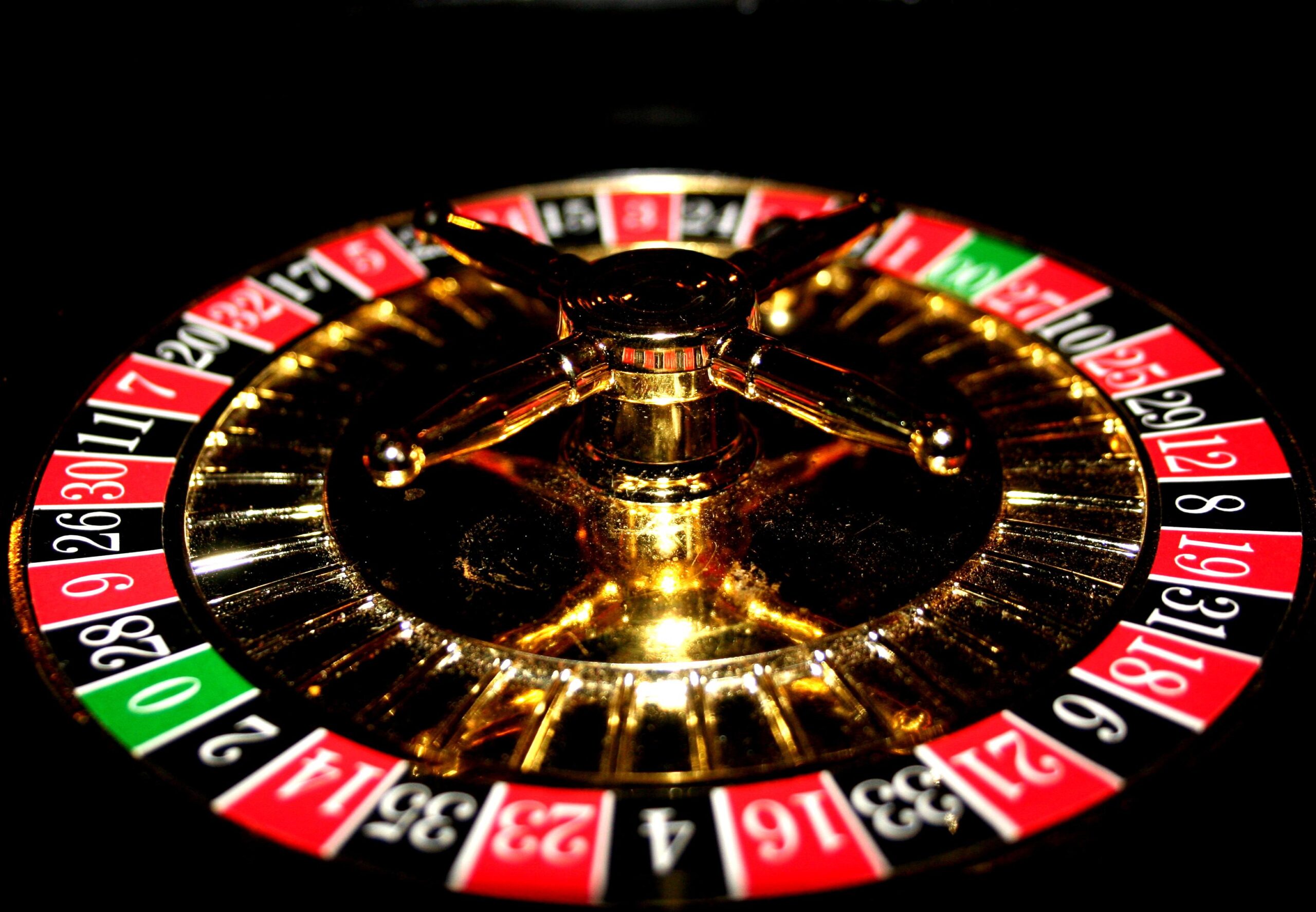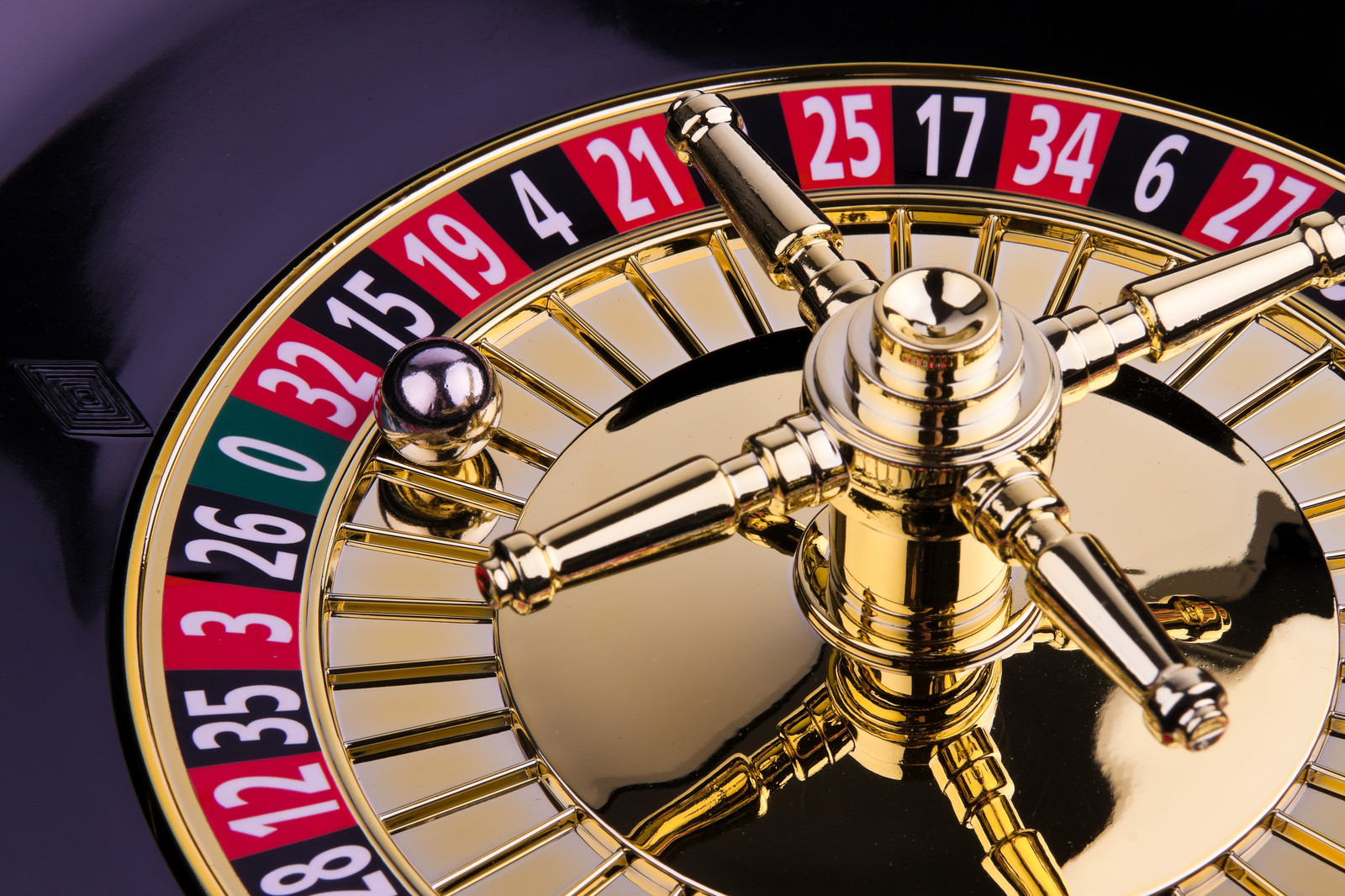Introduction
How The Roulette Wheel Works: The roulette wheel, a captivating centerpiece of the popular casino game, Roulette, has enthralled players for centuries with its allure of chance and anticipation. This article delves into the mechanics and inner workings of the roulette wheel, revealing the exciting process that determines the game’s outcomes.
The roulette wheel is a large, circular disk adorned with numbered pockets around its perimeter, and it serves as the focal point of the game. As players place their bets, the roulette wheel takes center stage, captivating the attention of all participants.
In this introduction, we explore the fundamental elements of the roulette wheel and the pivotal role it plays in creating the electrifying atmosphere of the game. We delve into the differences between the two main types of roulette wheels, the European and American wheels, and how they influence the odds and outcomes.
Understanding the spinning action of the roulette wheel is essential to appreciate the suspense and excitement it generates during gameplay. We discuss the intricate process of spinning the wheel and rolling the ball in opposite directions, and how gravity and friction gradually slow down the rotation, determining the final resting place of the ball.
By understanding the mechanics behind the roulette wheel, players can grasp the unpredictable nature of the game, where each spin offers an equal chance for any number to win. This captivating revelation enhances the allure of Roulette, leaving players eager to experience the thrilling moments of the roulette wheel in action.

Does a roulette wheel ever stop spinning?
Here’s something to watch the next time you’re near a roulette table: Notice that dealers in a live roulette game must keep the wheel in perpetual motion.
Yes, a roulette wheel eventually stops spinning. When the roulette game begins, the dealer or croupier spins the wheel in one direction, while simultaneously rolling the ball in the opposite direction on the track surrounding the wheel’s circumference. The wheel and the ball both continue to spin for a period, creating an exciting and suspenseful atmosphere for players.
However, due to the forces of gravity and friction, the spinning wheel and ball eventually lose momentum and slow down. As they lose speed, the ball moves towards the center of the wheel, and the wheel slows its rotation until both come to a complete stop.
Once the roulette wheel and ball have stopped moving, the position of the ball determines the winning number and color. The number slot where the ball comes to rest is the winning number, and any bets placed on that number or related combinations are winners.
In land-based casinos, the croupier announces the winning number, collects losing bets, and pays out the winning bets before starting a new round of play. In online casinos, the winning number is automatically displayed on the screen, and the winnings are credited to the players’ accounts.
The stopping of the roulette wheel is a critical moment in the game, as it determines the outcome of the bets and creates moments of excitement, anticipation, and celebration for players.
How do roulette wheels work?
To determine the winning number, a croupier spins a wheel in one direction, then spins a ball in the opposite direction around a tilted circular track running around the outer edge of the wheel.
Roulette wheels are the central element of the popular casino game of roulette. They are designed with precise engineering and mechanics to ensure fairness and random outcomes. Here’s how roulette wheels work:
1. Wheel Structure: A standard roulette wheel consists of a rotating circular disk with numbered pockets around its perimeter. The numbers are typically arranged in alternating red and black colors.
2. Ball and Spin: A small ball is introduced onto the spinning wheel, typically in the opposite direction of the wheel’s rotation. As the wheel spins, the ball travels along the track around the wheel’s circumference.
3. Gravity and Friction: As the wheel loses momentum due to friction and gravity, the ball eventually descends towards the center of the wheel.
4. Winning Number: The pocket in which the ball comes to rest determines the winning number for that spin.
5. Payouts: The winning number is announced by the dealer or displayed on the screen (in online casinos). Payouts are made to players who placed bets on the winning number or its related combinations.
Modern roulette wheels are precisely balanced and manufactured to high standards to ensure random outcomes. Casinos frequently inspect and maintain their roulette wheels to ensure fairness and prevent bias that could favor certain numbers or sections.
Overall, roulette wheels are designed to provide a thrilling and unpredictable gaming experience, where chance and luck play a significant role in determining the winning numbers and outcomes for players.
Is every roulette wheel the same?
For the untrained eye, there is no difference between the different types of roulette wheels, but at a closer look, the differences become self-evident. One of the first decisions that roulette players need to make is whether to spin a European or American roulette, as these are the two main types of roulette wheels.
No, not every roulette wheel is the same. While all roulette wheels share the same basic structure and mechanics, there are variations in design, manufacturing, and rules that can make each wheel unique.
The two main types of roulette wheels are the European roulette wheel and the American roulette wheel. The European wheel has 37 numbered pockets (0 to 36), while the American wheel has 38 numbered pockets (0, 00, and 1 to 36). This difference in the number of pockets affects the odds and house edge, making the two wheels distinct in terms of gameplay and potential payouts.
Additionally, some casinos may offer specialized versions of roulette wheels with unique features or betting options. For example, there are mini roulette wheels with fewer numbers, multi-wheel roulette where multiple wheels spin simultaneously, and even electronic roulette wheels with digital displays.
Moreover, physical roulette wheels used in land-based casinos can vary in build quality and balance, which can introduce slight biases and affect the randomness of outcomes. Casinos take measures to ensure their wheels are appropriately maintained and balanced to avoid favoring specific numbers or sections.
Furthermore, online casinos may use virtual roulette wheels with random number generators (RNGs) to simulate the spinning action of a physical wheel. The implementation of RNGs can differ between online casinos, potentially influencing the fairness and randomness of outcomes.

What is the wheel in roulette called?
The roulette wheel (both 0 and 00 versions) is sometimes referred to as the “Devil’s Wheel”. This is because its numbers add up to 666, aka the “number of the beast” – according to the Bible.
The wheel used in roulette is simply called the “roulette wheel.” It is the central component of the roulette game, where players place bets and the winning number is determined.
The roulette wheel is a large, circular disk with pockets around its circumference, numbered from 0 to 36 (or 00 to 36 in the case of the American roulette wheel). The pockets are colored alternately in red and black, except for the green pocket(s) representing the zeros (0 and 00, if applicable).
The design and structure of the roulette wheel are critical to the game’s fairness and randomness. The wheel’s pockets are precisely arranged to create a balanced distribution of numbers, ensuring that no particular section or number has an advantage over others.
When the game starts, the dealer or croupier spins the roulette wheel in one direction while rolling the small ball in the opposite direction on the track around the wheel. As the wheel and ball lose momentum, the ball eventually descends and settles into one of the numbered pockets, determining the winning number for that particular spin.
The roulette wheel is a symbol of chance and excitement, and it remains the centerpiece of one of the most popular and iconic casino games worldwide. Its spinning action and the anticipation of where the ball will land add to the thrill and allure of playing roulette.
How many outcomes does a roulette wheel have?
37 possible outcomes
If you want to know what is the probability that the coin will come up heads, then that would be: heads / (heads + tails) = 1/2 = . 5. Likewise when playing an even money bet at roulette, that option covers 18 of the 37 possible outcomes: 18/37=. 48648649.
In roulette, the term “outcomes” refers to the different possible results that can occur after the roulette wheel is spun and the ball is rolled. These outcomes are determined by the numbered pockets on the wheel and the corresponding colors.
In European roulette, there are 37 possible outcomes. These outcomes include the numbers 0 to 36. The numbers are colored alternately in red and black, with the exception of the green pocket representing the single zero (0).
In American roulette, there are 38 possible outcomes. The additional outcome is due to the presence of the double zero (00) pocket, in addition to the numbers 0 to 36. The numbers are again alternately colored in red and black, with two green pockets for the zero (0) and double zero (00).
Each outcome represents a unique combination of number and color, and players can place bets on any of these outcomes before the spin. The probability of each outcome occurring is determined by the number of pockets of that particular outcome and the total number of pockets on the wheel.
The different outcomes on the roulette wheel add to the excitement and unpredictability of the game, as players eagerly await the ball’s final resting place, hoping that their chosen outcome will be the lucky one. The variety of betting options based on these outcomes allows players to strategize and customize their gameplay, making roulette a popular and engaging casino game.
What are the two main types of roulette wheels, and how do they differ in terms of the number of pockets?
The two main types of roulette wheels are the European roulette wheel and the American roulette wheel. While they share similarities, they differ in terms of the number of pockets and the odds they offer to players.
1. European Roulette Wheel: The European roulette wheel is the more common version found in casinos worldwide, except in the United States. It features 37 numbered pockets, including numbers 1 to 36 and a single green pocket with the number 0. The numbers are alternately colored in red and black. The presence of only one green pocket (0) gives the European wheel a lower house edge, making it more favorable to players. The European wheel offers better odds and a higher RTP (Return to Player) percentage compared to the American wheel.
2. American Roulette Wheel: The American roulette wheel is primarily used in casinos in the United States. It has 38 numbered pockets, including numbers 1 to 36, with alternating red and black colors. Additionally, it has two green pockets, one with the number 0 and the other with the number 00 (double zero). The presence of the double zero (00) increases the house edge significantly, making the American wheel less advantageous for players compared to the European wheel.
The difference in the number of pockets between the European and American roulette wheels directly affects the odds and potential payouts for players. The European wheel’s lower number of pockets results in a higher probability of winning for certain bets, making it a preferred choice for many casino enthusiasts seeking better chances of success.
What creates the suspense and excitement during a roulette game as the wheel spins and the ball rolls?
The suspense and excitement during a roulette game are created by several factors as the wheel spins and the ball rolls, making it one of the most thrilling casino experiences.
1. Uncertainty of Outcome: Roulette is a game of chance, and the unpredictable nature of the ball’s final landing spot generates intense anticipation. As the wheel slows down, players hold their breath, wondering if their chosen number or bet will be the lucky one.
2. Visual and Auditory Stimulation: The visual spectacle of the spinning roulette wheel, accompanied by the sound of the ball bouncing and rattling in the pockets, immerses players in the gaming experience. The sights and sounds amplify the excitement, heightening emotions with every second.
3. Potential for Big Wins: The possibility of substantial payouts adds to the thrill. Whether it’s betting on a single number with a high payout or playing various betting combinations, the prospect of a big win keeps players engaged and invested in the game.
4. Social Atmosphere: Roulette is often played in a lively and social setting at land-based casinos. The cheers and reactions of other players and onlookers contribute to the contagious excitement, making it a communal experience.
5. Quick Gameplay: Roulette is a fast-paced game, with each spin taking only a few seconds. The rapid succession of spins keeps players engaged, offering a continuous stream of adrenaline-pumping moments.
How does the roulette wheel ensure fair and random outcomes for each spin, regardless of previous results?
The roulette wheel ensures fair and random outcomes for each spin through the use of a random number generator (RNG) and precise engineering of the wheel itself. These mechanisms prevent any predictable patterns or biases from influencing the results, making each spin independent of previous outcomes.
1. Random Number Generator (RNG): In modern electronic roulette machines, a computerized random number generator is used to determine the winning number for each spin. The RNG generates a sequence of random numbers that correspond to the various pockets on the wheel. This technology ensures that each number has an equal chance of being selected on every spin, regardless of past results.
2. Precision Engineering: Physical roulette wheels used in land-based casinos undergo rigorous testing and calibration to ensure they are perfectly balanced. The pockets are carefully designed to be of equal size and depth, and the wheel’s rotation is precisely calibrated. Any imperfections that could lead to biased results are meticulously corrected during the manufacturing process.
3. Spins are Independent Events: Each spin of the roulette wheel is an independent event, unaffected by previous spins or outcomes. The ball’s landing spot is determined solely by the laws of physics and probability, ensuring that the game remains completely fair.
4. Casino Regulation: Casinos are subject to strict regulations and audits to ensure fair play. Regulatory bodies oversee the operation of roulette wheels and other casino games, verifying the use of approved and certified RNG technology and ensuring that the games are conducted fairly and transparently.
Overall, the combination of RNG technology, precise engineering, and adherence to regulations ensures that the roulette wheel delivers genuinely random and fair outcomes, providing players with a sense of confidence and trust in the integrity of the game.

Conclusion
The roulette wheel stands as a symbol of chance and excitement, captivating players with its mesmerizing spin and the tantalizing anticipation of where the ball will land. Understanding how the roulette wheel works provides a deeper appreciation for the game of Roulette and its allure as one of the most beloved and iconic casino games.
The mechanics of the roulette wheel create an unbiased and random process, ensuring that each spin is independent and unpredictable. Whether it’s the European roulette wheel with 37 pockets or the American version with 38 pockets, the outcome of each spin is determined solely by chance, making it a true game of luck.
The spinning action of the wheel, accompanied by the rhythmic rolling of the ball, adds to the excitement and suspense of the game. As the wheel loses momentum, the ball descends towards the numbered pockets, creating a moment of tension and anticipation for players and onlookers alike.
The roulette wheel also serves as a testament to the precision and craftsmanship involved in casino gaming equipment. To maintain fairness, casinos meticulously balance and inspect their roulette wheels to prevent biases or imperfections that could influence the results.
In the world of gambling, the roulette wheel stands as an iconic emblem, offering players the thrill of chance and the allure of potential fortune. It transcends cultural and geographical boundaries, remaining a timeless symbol of excitement and risk-taking.
By understanding how the roulette wheel works, players gain insight into the core essence of the game – an exhilarating blend of chance and unpredictability. The roulette wheel’s magic lies in its ability to transform an ordinary moment into an extraordinary one, making every spin a memorable and captivating experience for those who dare to take a chance at the wheel of fortune.










